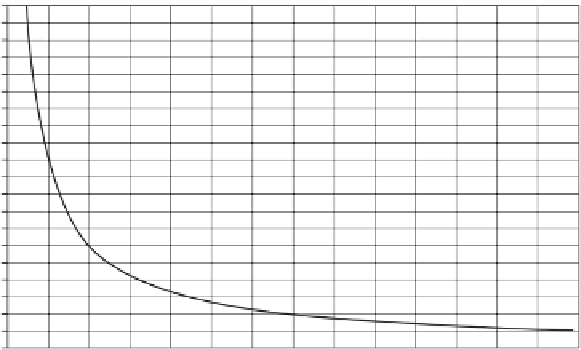Environmental Engineering Reference
In-Depth Information
Solving for well drawdown at r = 1 ft (0.305 m):
3
2
ft
ft
2 3
.
⋅ −
⋅
(
133 7
.
)
2
.
25 2
⋅
⋅
⋅
360
min
drawdown
=
min
⋅
log
min
ft
2
1
ft
2
0 1
.
4
π
⋅
2
min
drawdown
=
5
1 5
.
ft
=
15 7
.
m
This result, that the mound of injection rises 51.5 feet (15.7 meters) above the
water table, presents a difficulty. The well is only 200 feet (61 meters) deep,
so the water rises 25% of the way up the well when water is injected in this
fashion. The storage coefficient (S) has a much smaller effect on the mound
height, although an aquifer having a high S experiences a decrease in draw-
down or a decrease in mound height. On the other hand, if the transmissiv-
ity is raised to 10 ft
2
/min (154.8 cm
2
is the mound height decreases to 12 feet
(3.7 meters). Therefore, transmissivity plays an important role in the height
of the injection mound and in the design of the power output of the system.
This analysis indicates that an aquifer with high transmissivity (high
hydraulic conductivity) is needed. Figure 4.5 shows a plot of mound
height versus transmissivity, holding the other values given above con-
stant. This plot demonstrates the trend of decreased mound height as
transmissivity increases.
Based on this analysis, the original hypothesis of whether the same flow
that can be yielded by pumping can be re-injected into a well has been tested.
Mound Height versus Transmissivity
200
190
180
170
160
150
140
130
120
110
100
90
80
70
60
50
40
30
20
10
0
0.25
1.25
2.25
3.25
4.25
5.25 6.25 7.25 8.25
Transmissivity [ft^2/min]
9.25 10.25 11.25 12.25 13.25
FIGURE 4.5
Mound height versus aquifer transmissivity.


